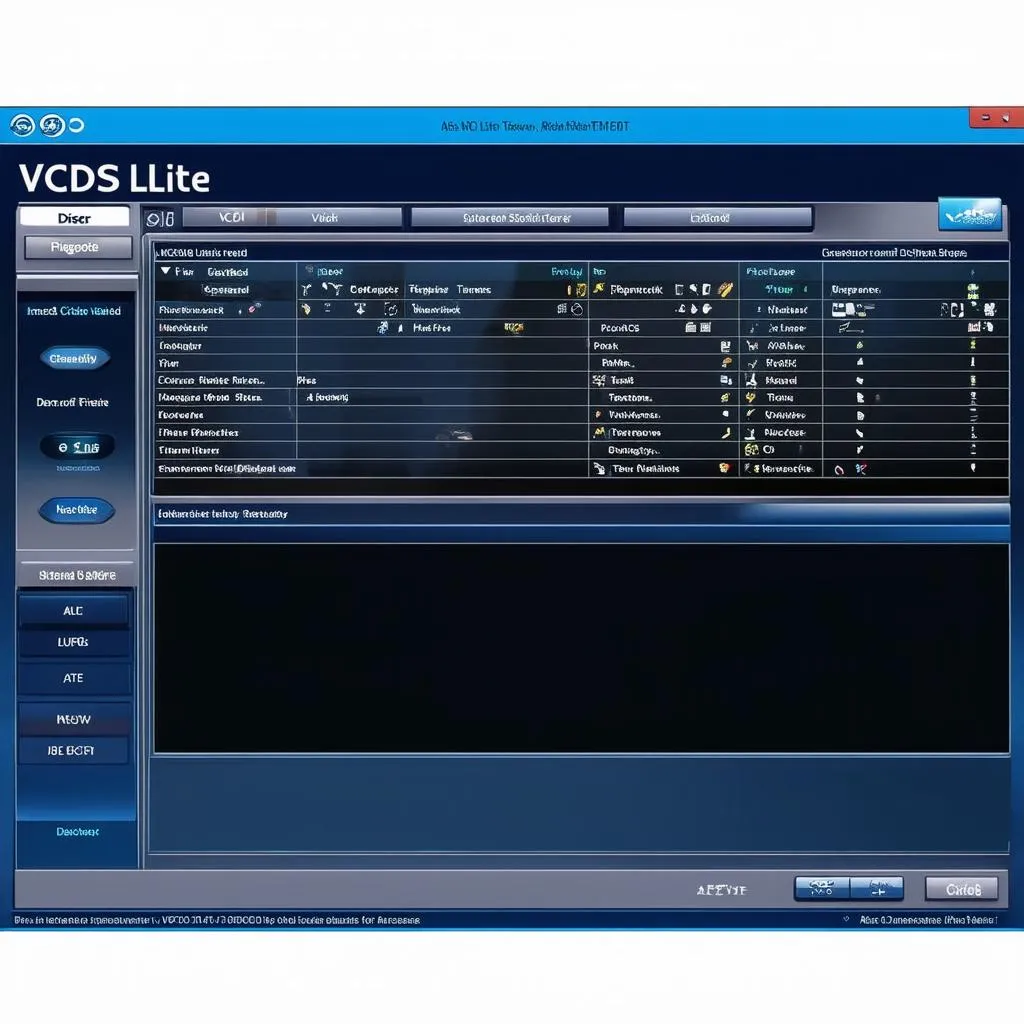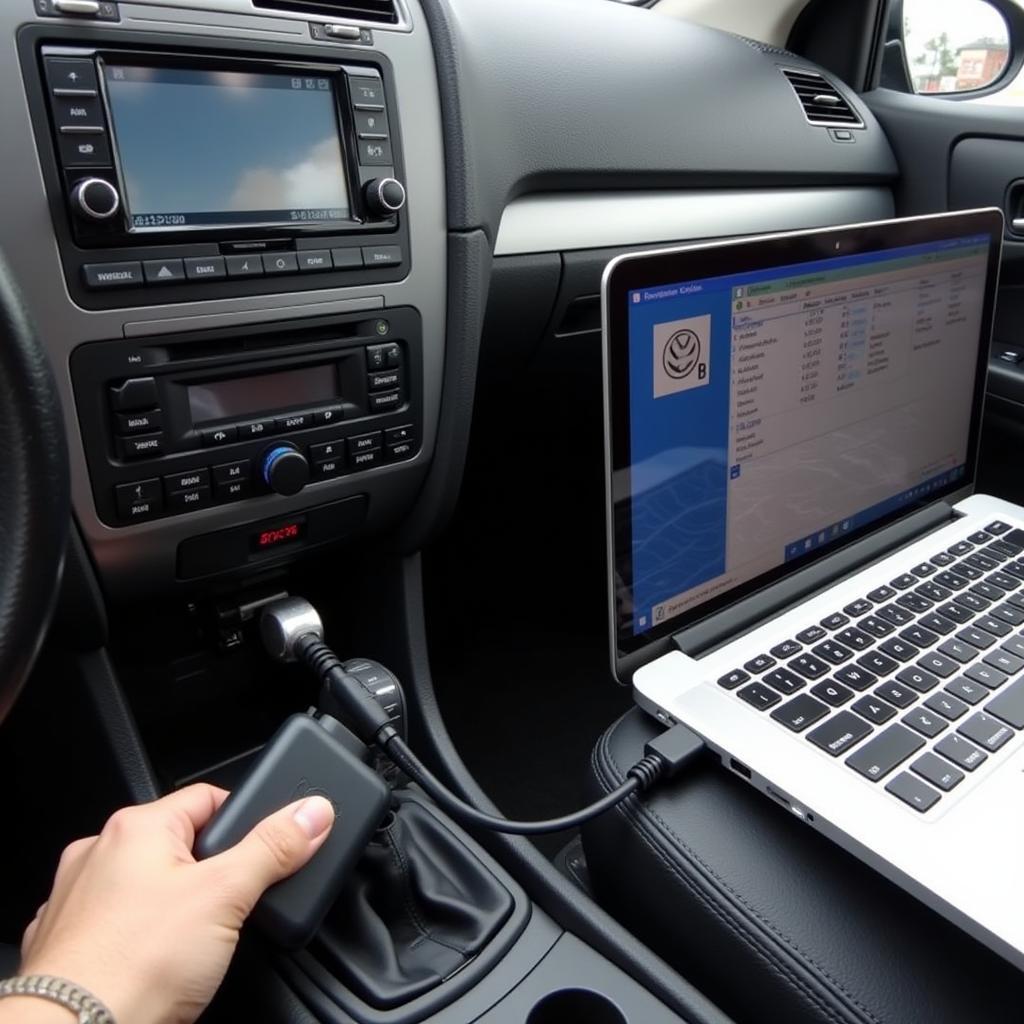The Volkswagen Audi Group (VAG) uses a complex system of error codes to help mechanics diagnose and fix problems. One such code is 02438 VCDS, a code that can be intimidating for car owners. This comprehensive guide will break down what 02438 means, its symptoms, causes, and how to address it.
What is VCDS Error Code 02438?
Before we delve into the specifics, it’s crucial to understand the role of VCDS. VCDS (VAG-COM Diagnostic System) is a diagnostic software used to interface with the onboard computers of vehicles manufactured by Volkswagen Audi Group (including Audi, Seat, Skoda, and Volkswagen). This software allows mechanics and car enthusiasts to read and clear fault codes, access live data streams, and perform various adaptations.
Error code 02438 specifically points to a problem with the “Boost Pressure Control Valve (N75) – Open Circuit.” This valve plays a vital role in regulating boost pressure from the turbocharger or supercharger. When the engine control unit (ECU) detects an open circuit in the N75 valve’s electrical circuit, it logs the 02438 code.
boost-pressure-control-valve|Boost Pressure Control Valve|Close-up photo of a boost pressure control valve with its electrical connector and vacuum hoses attached. The valve is shown against a clean, well-lit background.
Symptoms of Error Code 02438
A malfunctioning N75 valve can lead to various performance issues. Common symptoms associated with error code 02438 include:
- Reduced Engine Power (Limp Mode): The ECU might activate “limp mode” to prevent further damage. Limp mode limits engine power, leading to sluggish acceleration and reduced top speed.
- Check Engine Light Illumination: The check engine light on your dashboard will illuminate, signaling a problem that needs attention.
- Unusual Turbocharger/Supercharger Noises: You might hear unusual whistling or hissing sounds coming from the turbocharger or supercharger, indicating a boost leak or pressure control issue.
- Increased Fuel Consumption: As the engine struggles to maintain desired boost pressure, it can lead to inefficient fuel combustion and increased fuel consumption.
car-dashboard-check-engine-light|Check Engine Light|Photo of a car dashboard with the check engine light illuminated in orange, indicating a potential engine problem.
Common Causes of VCDS Error Code 02438
Several factors can contribute to an open circuit in the N75 valve’s electrical system, leading to the 02438 code:
- Faulty N75 Valve: The valve itself can fail due to wear and tear, electrical short circuits, or mechanical malfunctions.
- Wiring Harness Issues: Damaged, corroded, or loose wiring in the harness connecting the N75 valve to the ECU can cause an open circuit.
- Vacuum Leak: The N75 valve operates using vacuum pressure, and leaks in the vacuum lines or hoses can disrupt its function.
- Faulty Boost Pressure Sensor: While not directly related to the N75 valve, a faulty boost pressure sensor can send incorrect readings to the ECU, causing it to misinterpret the situation and log the 02438 code.
Diagnosing and Fixing Error Code 02438
If you encounter the 02438 code, it’s crucial to diagnose the problem accurately before replacing any parts. Here’s a step-by-step approach:
- Read the Error Codes: Connect your VCDS tool and read the error codes stored in the ECU. This will confirm if 02438 is the only code present or if other related codes exist.
- Inspect the N75 Valve: Visually inspect the N75 valve for any signs of physical damage, loose connections, or corrosion.
- Check the Wiring Harness: Thoroughly examine the wiring harness for any breaks, frays, or loose connections between the N75 valve and the ECU.
- Test for Vacuum Leaks: Use a vacuum gauge to check for leaks in the vacuum lines and hoses connected to the N75 valve.
- Test the N75 Valve: Use a multimeter to test the electrical resistance of the N75 valve’s solenoid. Compare the readings to the manufacturer’s specifications.
mechanic-diagnosing-car-with-scanner|Car Diagnostic Scanner|A mechanic is using a diagnostic scanner plugged into a car’s OBD-II port to read error codes and diagnose engine problems.
Frequently Asked Questions about VCDS Error Code 02438
Q: Can I continue driving with error code 02438?
A: While you might be able to drive for a short distance, it’s not recommended. Driving with a malfunctioning N75 valve can lead to reduced engine performance, increased fuel consumption, and potentially further engine damage. It’s best to address the issue promptly.
Q: Is it safe to clear the 02438 code without fixing the underlying problem?
A: Clearing the code without resolving the root cause will only provide a temporary solution. The check engine light will likely reappear, and the underlying problem will persist.
Q: Do I need to replace the entire N75 valve if it’s faulty?
A: In most cases, replacing the entire N75 valve is the most effective solution. They are relatively inexpensive and straightforward to replace. However, if the issue lies with the wiring harness or vacuum lines, repairing those components might be sufficient.
Cardiagtech: Your Partner in Automotive Diagnostics
Dealing with error codes like 02438 can be daunting. If you’re unsure about diagnosing or fixing the problem yourself, seeking professional help is always recommended. For reliable automotive diagnostic tools and resources, consider Cardiagtech. They offer a wide range of products to help you understand and address your car’s needs.
Conclusion
Understanding VCDS error codes is crucial for maintaining your vehicle’s health and performance. Error code 02438, related to the boost pressure control valve, can significantly impact your driving experience. By understanding its causes, symptoms, and diagnostic steps, you can take appropriate measures to ensure your vehicle runs smoothly and safely. Remember, when in doubt, consult a professional mechanic or explore resources like those provided by CARDIAGTECH.


